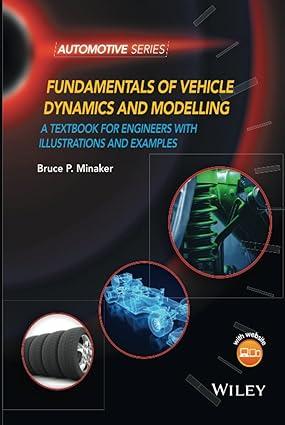A student competition vehicle has experienced a hydraulic brake line failure, disabling the front brakes of the
Question:
A student competition vehicle has experienced a hydraulic brake line failure, disabling the front brakes of the vehicle. Luckily, the vehicle has been designed with separate hydraulic circuits, and the rear brakes are still functional. The coefficient of friction of the surface is ???? = 0.7, and the vehicle properties are as follows:
Mass: 335 kg Wheelbase: 1.7 m Distance from the centre of mass to the front axle: 0.7 m Height of the centre of mass: 0.6 m (above the ground)
a) What is the maximum deceleration that can be obtained?
b) What is maximum deceleration that could be obtained if all the brakes were functioning optimally (i.e., simultaneously on the verge of locking)? Comment on the significance of the difference. What is the front/rear brake force distribution in the optimal configuration? Does this seem like a reasonable ratio?
c) By the time the team repairs their vehicle, returning it to its design spec of front to rear brake force distribution fixed at 70%/30%, it has begun to rain, and the coefficient of friction of the surface is reduced to ???? = 0.4. Will the front or rear tires now lock first? What is the deceleration when the first lockup occurs?
Step by Step Answer:

Fundamentals Of Vehicle Dynamics And Modelling A Textbook For Engineers With Illustrations And Examples
ISBN: 98987
1st Edition
Authors: Bruce P. Minaker





